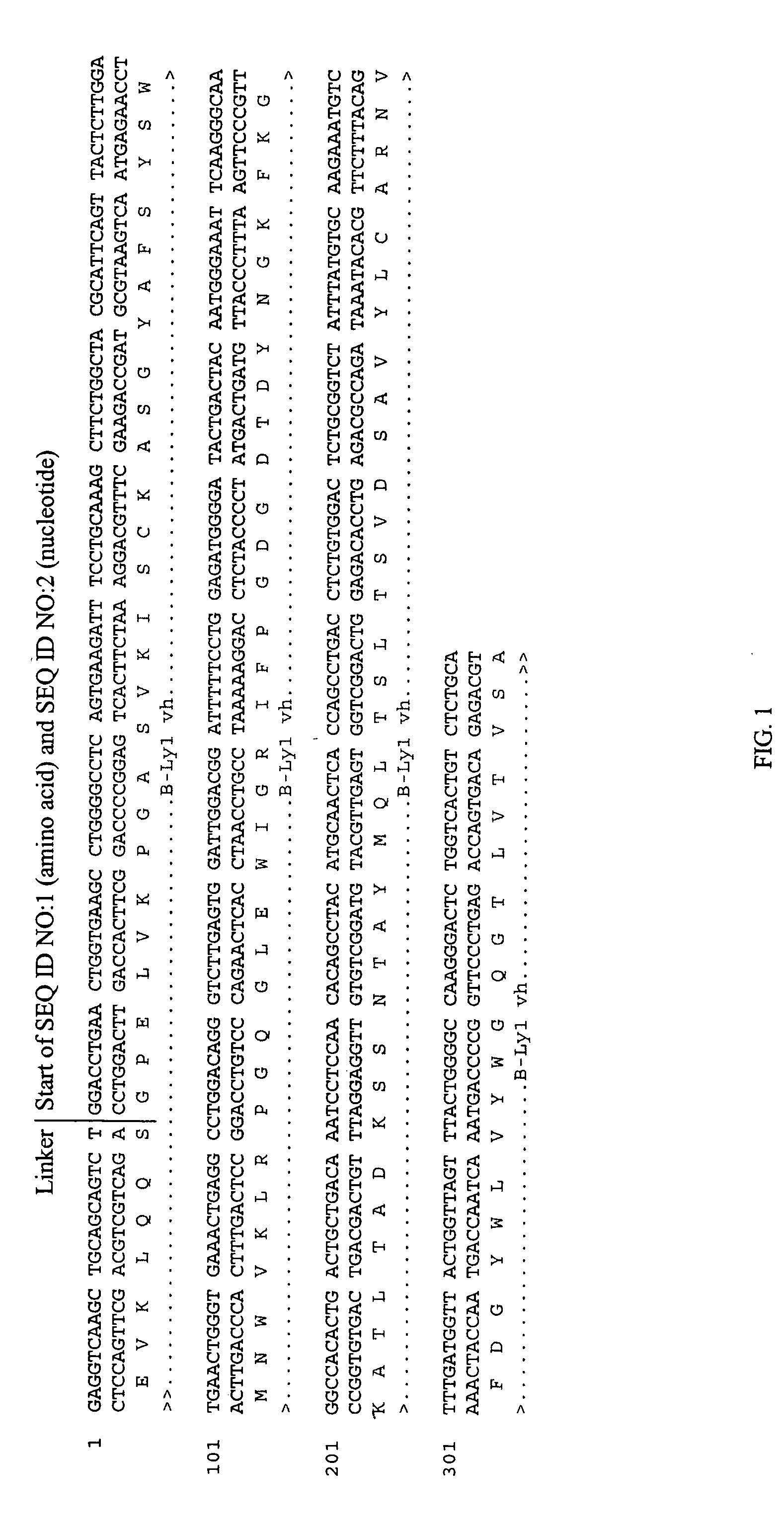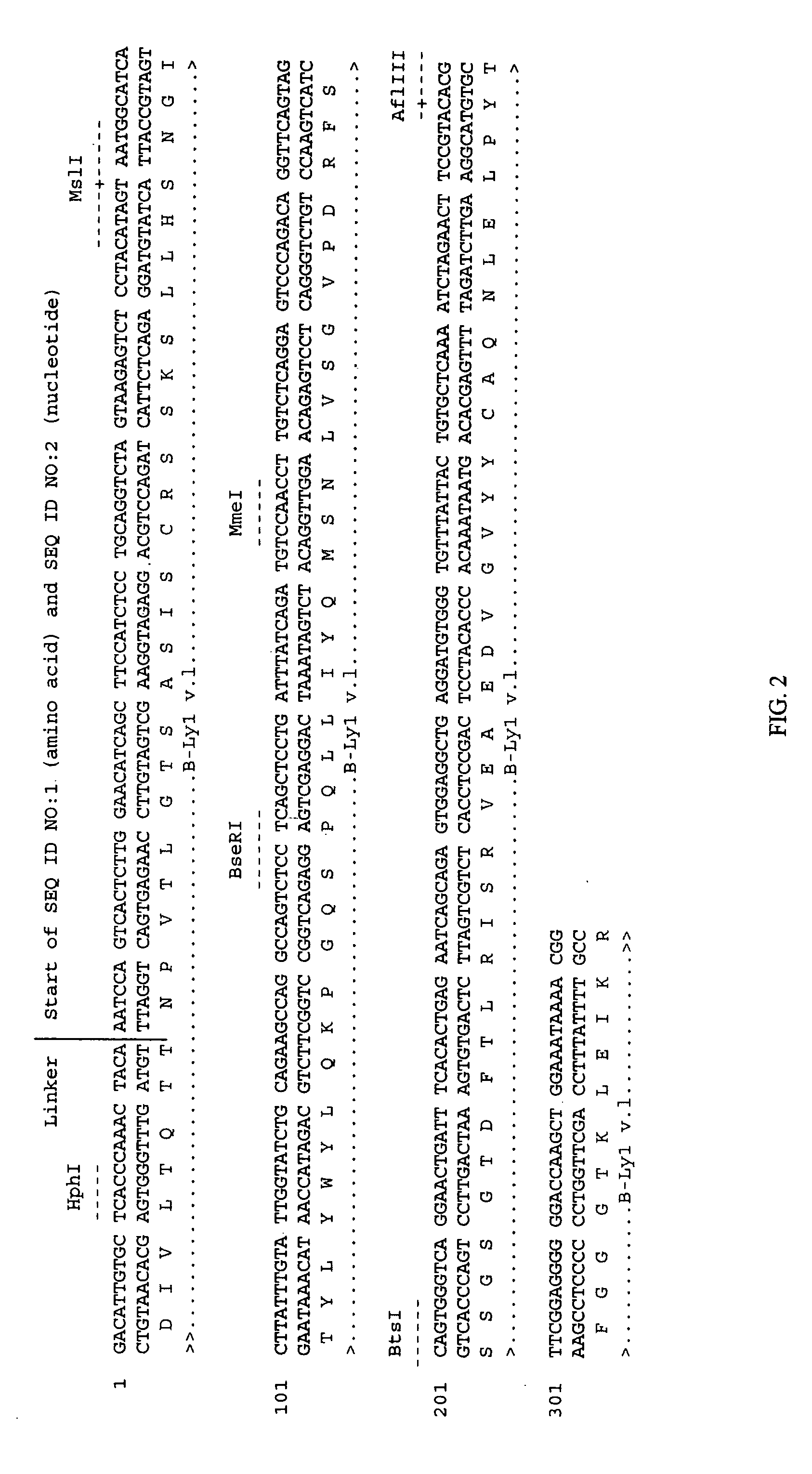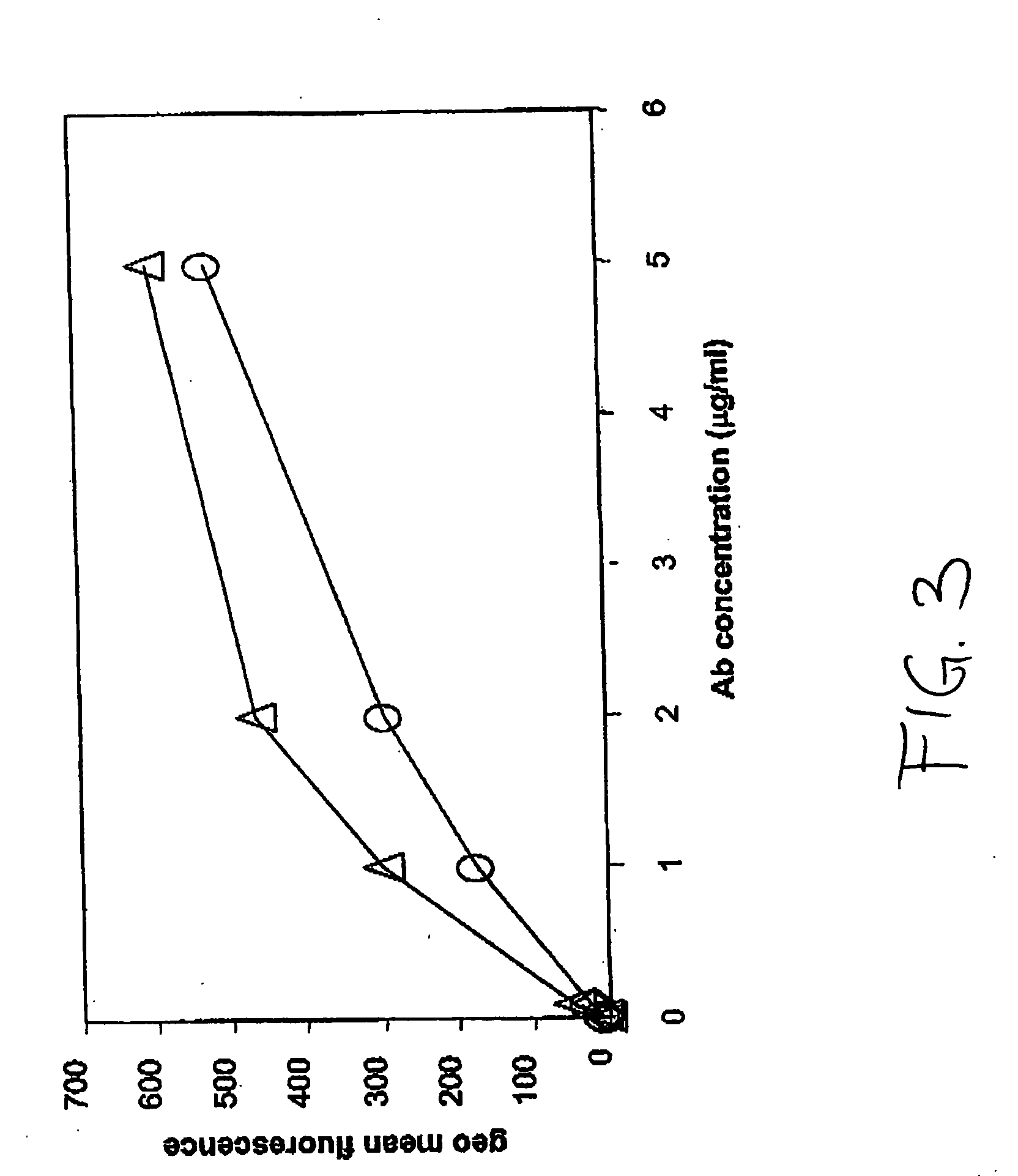Antigen binding molecules with increased Fc receptor binding affinity and effector function
a technology of fc receptor and binding affinity, applied in the field of antigen binding molecules, can solve the problems of induction of immune responses, non-human monoclonal antibodies lacking human effector functionality, etc., and achieve the effect of enhancing the binding affinity and effector function of fc receptors and enhancing the efficacy of these abms
- Summary
- Abstract
- Description
- Claims
- Application Information
AI Technical Summary
Benefits of technology
Problems solved by technology
Method used
Image
Examples
example 1
Materials and Methods
Cloning and Expression of Recombinant Antibody B-Ly1
[0229] B-Ly1 expressing hybridoma cells were grown in RPMI containing 10% FBS and 4 mM L-glutamine. 6×106 cells with a viability>90% were harvested and total RNA was isolated using a Qiagen RNAeasy midi kit. cDNAs encoding the variable light and heavy chains of B-Ly1 were amplified by RT-PCR. The RT-PCR reaction was performed using the following conditions: 30 min 50° C. for the first strand cDNA synthesis; 15 min 95° C. initial denaturation; 30 cycles of 1 min 94° C., 1 min 45° C., 1.5 min 72° C.; and a final elongation step for 10 min at 72° C. The expected size of the PCR products was confirmed by gel electrophoresis. The PCR products were cloned into suitable E. coli vectors and DNA sequencing confirmed that the variable light and heavy chain encoding genes were isolated.
[0230] For construction of chimeric B-Ly1 expression vectors, synthetic signal sequences and appropriate restriction sites were fused...
example 2
High Homology Acceptor Approach
[0245] The high homology antibody acceptor framework search was performed by aligning the mouse B-Ly1 protein sequence to a collection of human germ-line sequences and picking that human sequence that showed the highest sequence identity. Here, the sequence VH1—10 from the VBase database was chosen as the heavy chain framework acceptor sequence, and the VK—2—40 sequence was chosen to be the framework acceptor for the light chain. Onto these two acceptor frameworks, the three complementary determining regions (CDRs) of the mouse heavy and light variable domains were grafted. Since the framework 4 region is not part of the variable region of the germ line V gene, the alignment for that position was done individually. The JH4 region was chosen for the heavy chain, and the JK4 region was chosen for the light chain. Molecular modelling of the designed immunoglobulin domain revealed one spot potentially requiring the murine amino acid residues instead of t...
PUM
| Property | Measurement | Unit |
|---|---|---|
| pH | aaaaa | aaaaa |
| pH | aaaaa | aaaaa |
| volume | aaaaa | aaaaa |
Abstract
Description
Claims
Application Information
 Login to View More
Login to View More - R&D
- Intellectual Property
- Life Sciences
- Materials
- Tech Scout
- Unparalleled Data Quality
- Higher Quality Content
- 60% Fewer Hallucinations
Browse by: Latest US Patents, China's latest patents, Technical Efficacy Thesaurus, Application Domain, Technology Topic, Popular Technical Reports.
© 2025 PatSnap. All rights reserved.Legal|Privacy policy|Modern Slavery Act Transparency Statement|Sitemap|About US| Contact US: help@patsnap.com



